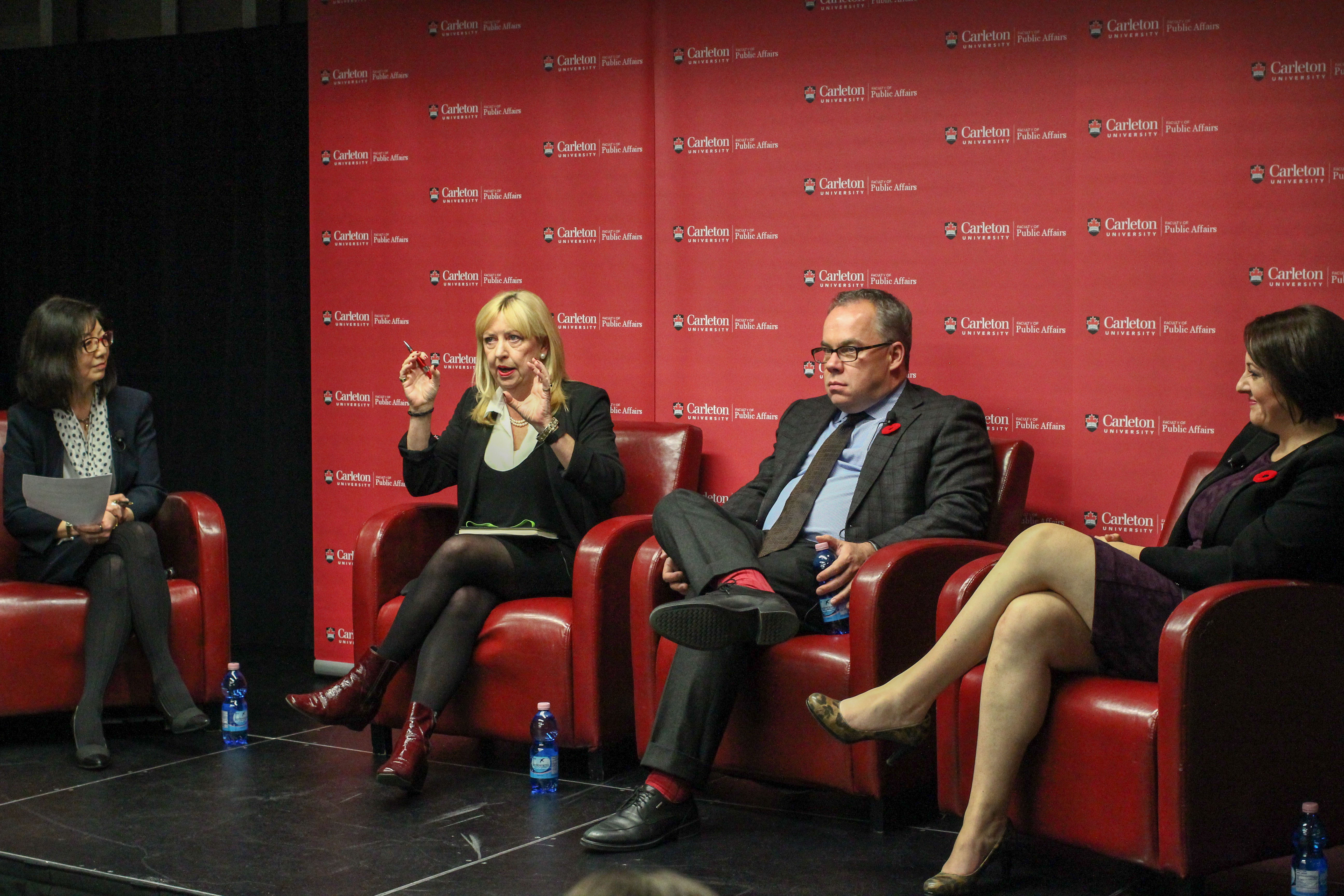Political junkies from all parties gathered to for a panel co-sponsored by Carleton’s Bell Chair and the Make an Electoral Democracy Research Program on Nov. 2.
The panel, which was about the role of social media in the 2015 federal election, featured Rosemary Barton, the interim host of Power & Politics; Susan Delacourt, a political commentator who writes for the Toronto Star; and Paul Wells, political editor at Maclean’s magazine.
Wells spoke about tactics used on social media, such as the hashtag #SawAnAd, which let voters keep tabs on each parties’ movements. Wells said he believed social media was successful in engaging voters.
Barton also said she thought the parties used social media strategically.
“No party was immune to the effect of the discovery of what its members had displayed to the public online. The level of crazy uncovered online became a vetting game between candidates,” Barton said.
Social media such as Facebook and Twitter were used by parties for engaging new followers and keeping the interest of existing followers, Delacourt said.
The panel was hosted by Susan Harada, the associate director of Carleton’s School of Journalism and Communication.
Harada said she hoped students would take away a sense of the important role media plays in politics.
“Social media wasn’t as saturated as it is now. Students should take away an understanding that we are able to sit down not long after a campaign and talk to political journalists who played a key role in covering it [and] to figure out what the role of the media was,” Harada said.
“What did the media get right, where could the media have done better, what kind of campaigns were run, and how the political parties ran them from the media’s perspective,” she said.
Davis Whittington-Heeney, a political science and public administration student at the University of Ottawa who attended the event, said he thought the event was useful.
“I have a lot of respect for all three of the panelists, really. All three are in very different places but they’re all great,” Whittington-Heeney said.
He added he thought the media did a good job of making voters aware, and it might have something to do with the increased voter turnout in this election.
“Why did we get a six to eight per cent increase in turnout? It was because of the media,” Whittington-Heeney said.
“Even before election day I was really down in the dumps thinking that no one votes and the turnout would be so low, we’re done with that because people are discussing the elections on social media and it’s impossible to get rid of that,” he said.
Delacourt said she thinks the future of Canadian election campaigns is relatively uncertain because this year was different than past years.
“This election is really going to be a transition . . . A lot of the things we saw in this campaign we’ll never see again,” Delacourt said.
“I took away the personal way that journalists interact and how it’s a journey for them as well. It really humanized journalists,” Whittington-Heeney said.






